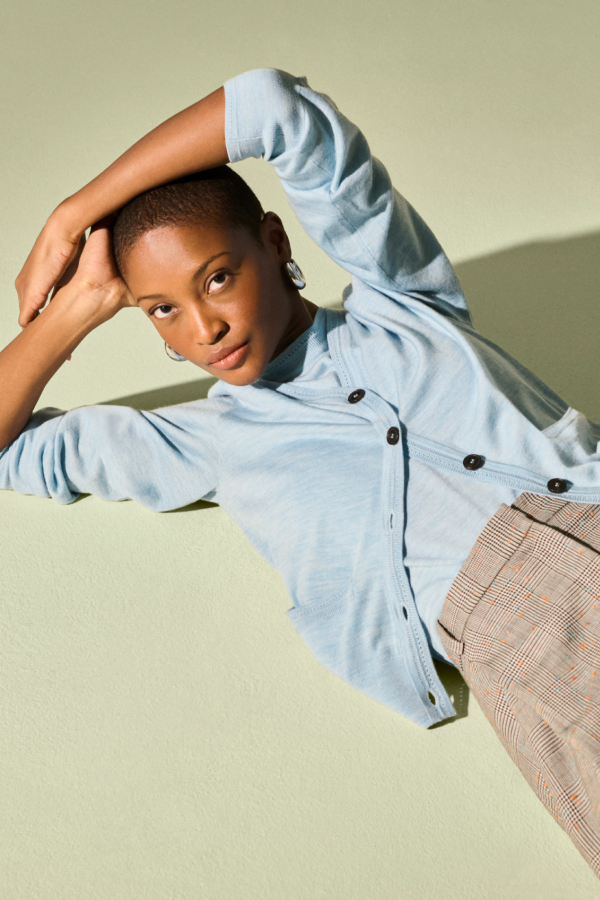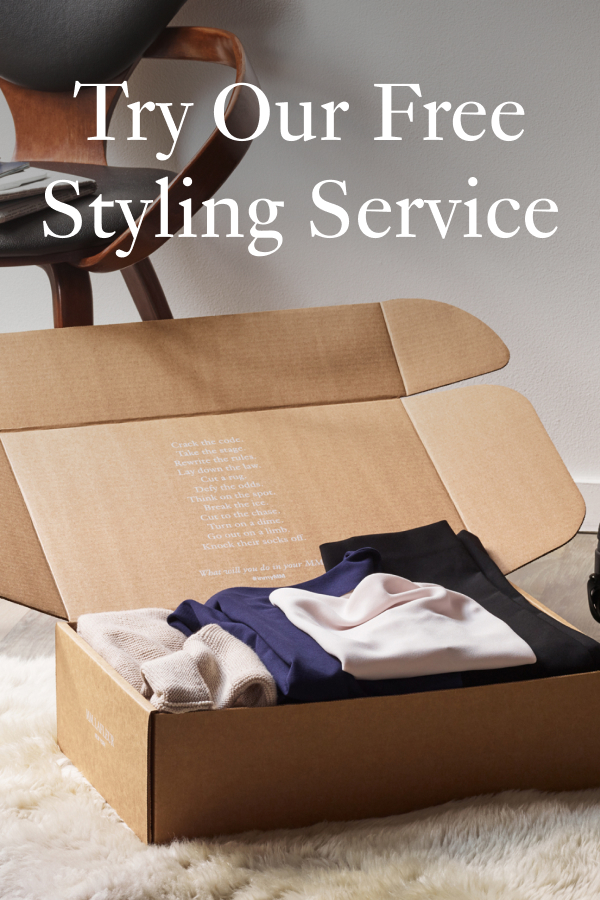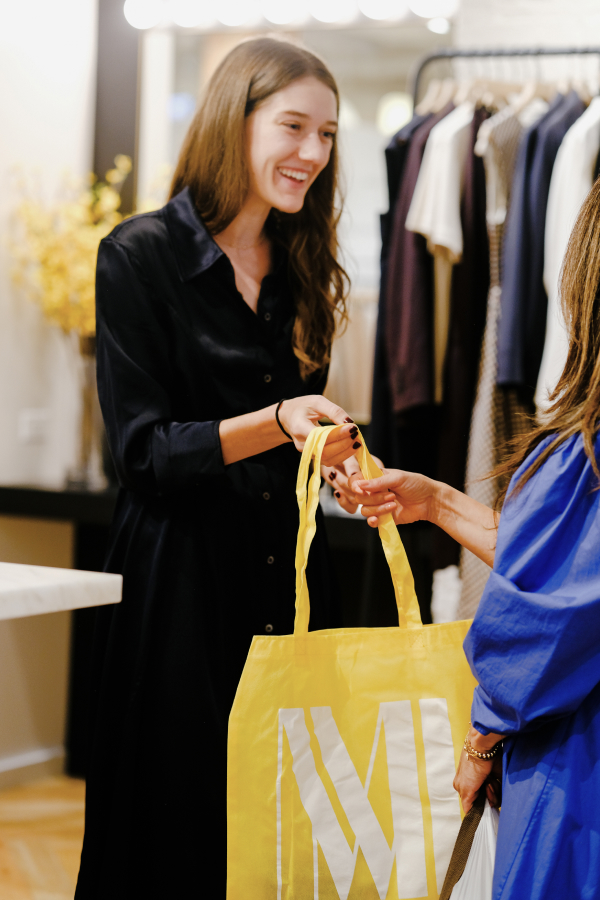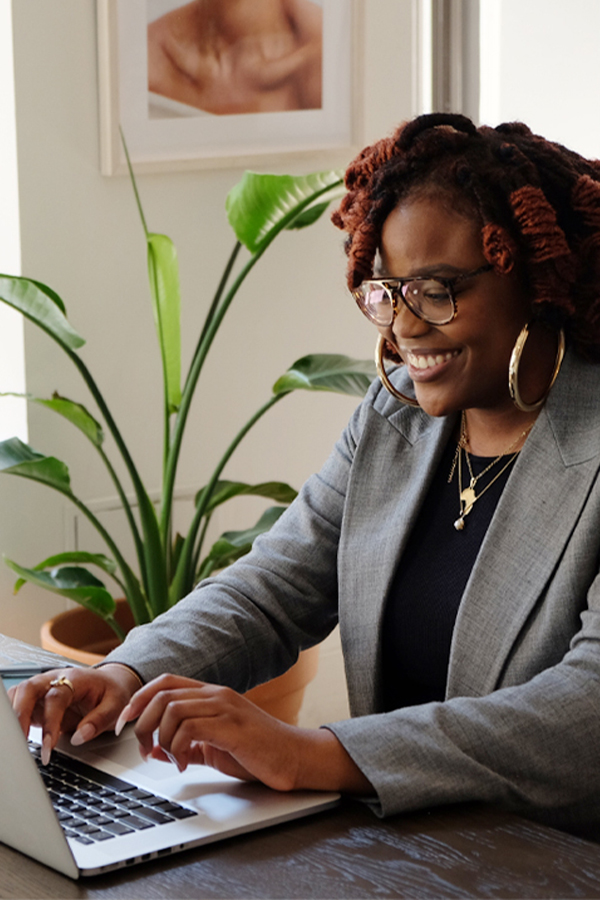What Makes a Man One of the “Good Guys?”
November 15, 2019 | Filed in: Woman of the Week
In the aftermath of #MeToo, journalist Cleo Stiller—creator and host of the acclaimed TV show, Sex.Right.Now—was flooded with direct messages and hushed questions from men. Many of them identified as “good guys,” but suspected they could be better, and wanted to find out how. And Stiller, who had spent years building her reputation as a reporter on topics like online dating, relationships, and gender dynamics, was in a unique position to provide guidance. The result is her new book, Modern Manhood: Conversations About the Complicated World of Being a Good Man Today, which provides widely-sourced information and advice about how to navigate the gray areas in relationships. Here, Stiller talks about her career path from finance to journalism, getting up at 4am every morning (not recommended), and how women can have better conversations with the men in their lives about sex and gender in the #MeToo era.
I STARTED MY CAREER AT A BIOTECH INVESTMENT FIRM. I thought I wanted to be the next Zoe Cruz and take over Wall Street. But I realized pretty quickly that I’m not very good with numbers or Excel. And the skills I do have—talking to people and getting them to open up—weren’t getting much use. At one point, a boss pulled me aside and said, “You could try to make this job work, but you’re always going to be swimming upstream, and you have so many other gifts. Why not follow those instead?” It hurt my feelings at the time, but he was absolutely right, and I have a tremendous amount of gratitude for him. It was an important lesson: you should do what you’re good at. Work is hard enough as it is, and if you’re trying to pursue something that feels like putting your head through a brick wall, maybe that’s a sign that you should try something else.
Want more M.M.? Sign up for our newsletter.
MY FIRST JOURNALISM JOB WAS AT BLOOMBERG, where I was a financial news producer. It was a pretty natural transition, because I was coming from a finance background, and it immediately felt like a better fit. My first week there, I remember sitting in the morning editorial meeting, when everyone gets together to talk about what they’re going to cover that day and how they’re going to cover it. And it just felt so powerful and exciting. I remember thinking, “Oh, yes. This is it. This is what I want to be doing.” When it clicks, it clicks. I was like, “Game time.”
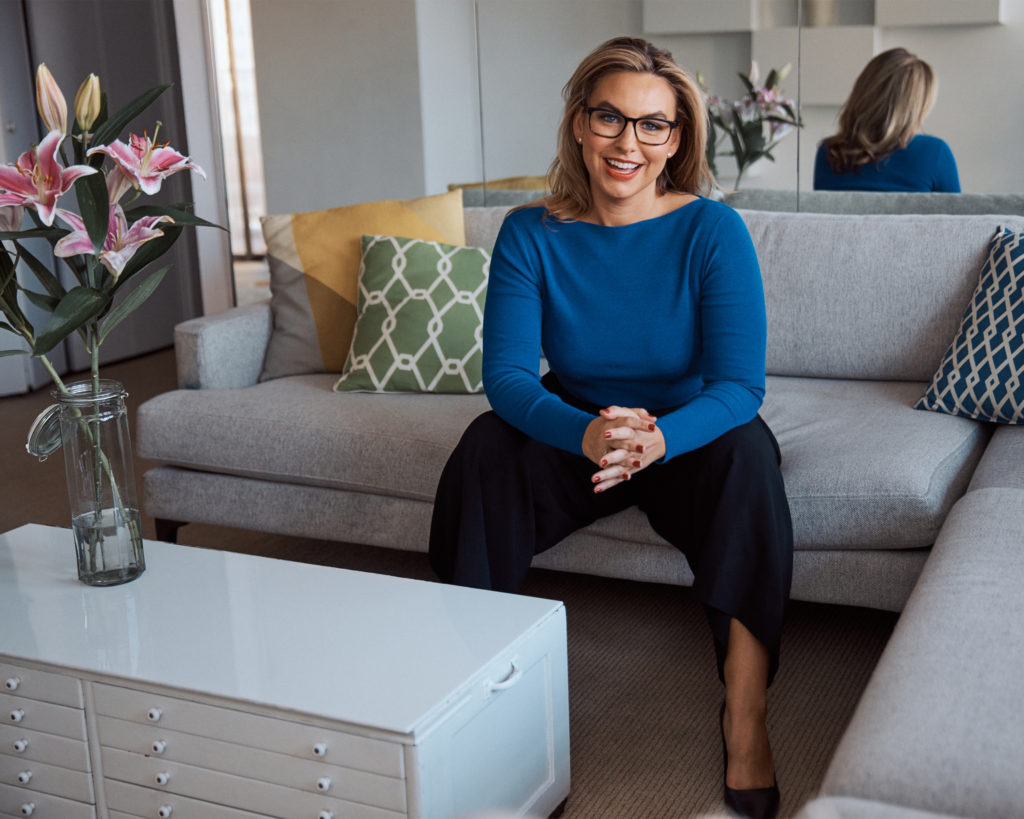
Cleo wears the Celeste top, the Zhou culotte, and the Ginger pump.
PRETTY QUICKLY, I GOT A REPUTATION AT BLOOMBERG for booking unusual guests who made for good segments. Technically, business news is any story you can tell that follows the money. And I was always interested in the people behind those stories, the human element. After a year or so, a mentor came to me and said, “Business news means you’re always going to be chasing the money angle of a story, but you clearly have such an interest in going outside of that sphere. Why don’t you explore that more?” Just like at my first job, I got a gentle nudge towards something different. Around that time, Fusion was launching, so I went there to work on their digital video team.
TO GET PEOPLE TO TALK OPENLY ABOUT INTIMATE AREAS of their lives, you have to have a soft touch. You have to be empathetic and non judgmental. I’ve always been the friend in the group that you went to for questions and advice, particularly about sex. I did some work with Planned Parenthood as a young person and taught some light sex ed in Costa Rica during college. I wasn’t formally trained as a sex educator, but I had some background. And I also try to be observant. What are my friends talking about? What are the questions that keep coming up at drinks, at dinners? And I also looked at what people were talking about on Twitter and YouTube. That’s what led me to produce a couple of one-off videos about sex, health, and relationships that ultimately became my first show, Asking for a Friend.
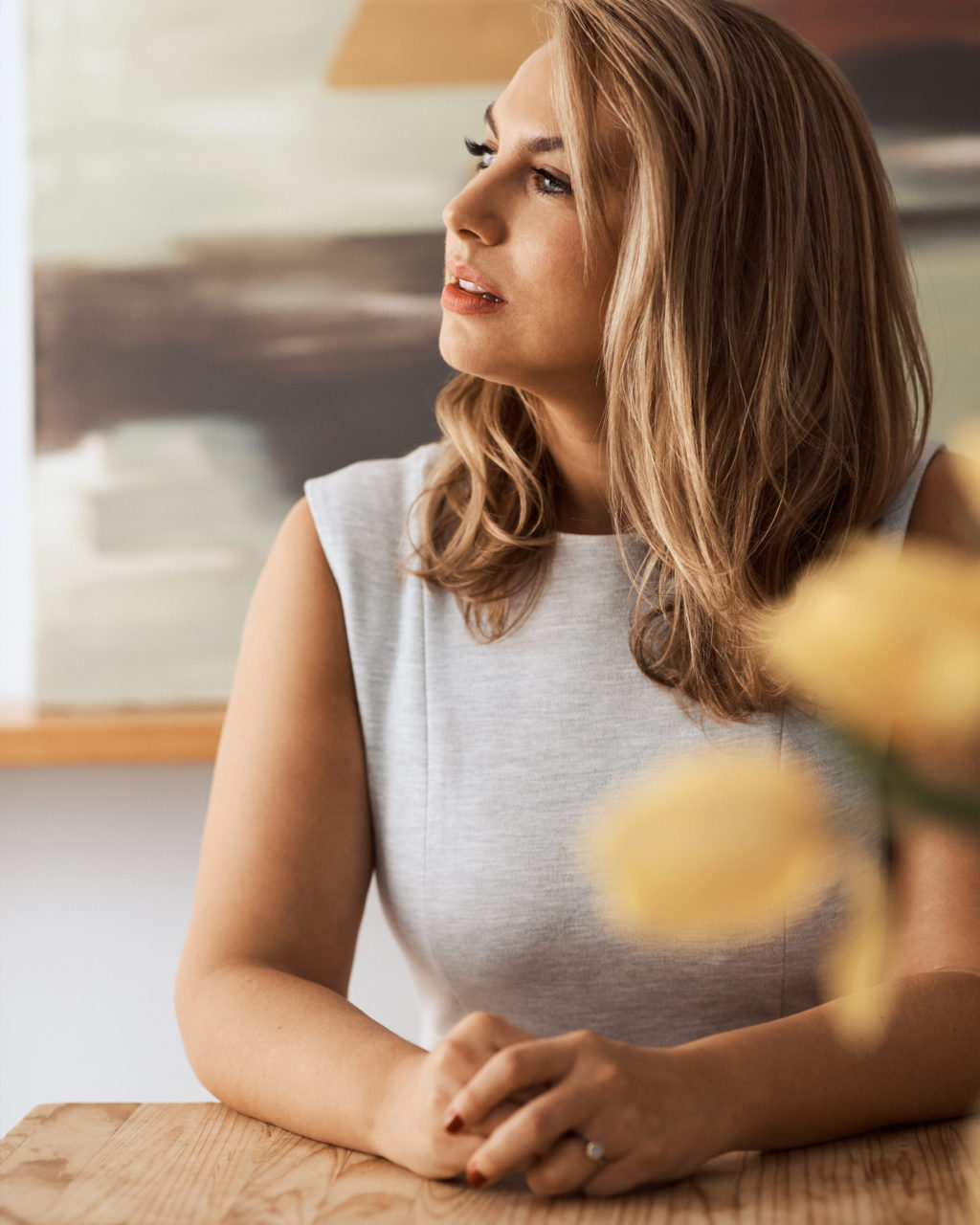
Cleo wears the Giovanna dress.
WHEN WE STARTED OUR SHOW IN 2014, it was a really important time for our generation to be talking about subjects like gender identity, body confidence, and online dating. There was a lot of information about those topics on social media that was not accurate or science-based or even healthy. At the same time, Tinder had just hit the mainstream. The Supreme Court had just legalized same-sex marriage. There was more awareness around the trans community. People were talking about these things, but also confused about them. And it was interesting to find that the queer Latinx kid in Brooklyn was thinking about some of the same things as the straight white guy in the Bay area. Maybe they have very different lives, but they were grappling with similar questions. So I started looking into these topics and finding sources who could speak to their experiences about it, or finding experts who could provide fact-based information. And we quickly built a reputation around that.
I’M ALWAYS VERY CAREFUL ABOUT THE CONTENT I PUT OUT. It’s not my opinion. We’re just reporting the facts. And that’s particularly important these days, when a lot of stuff that gets pitched as journalism is actually just one person’s viewpoint.
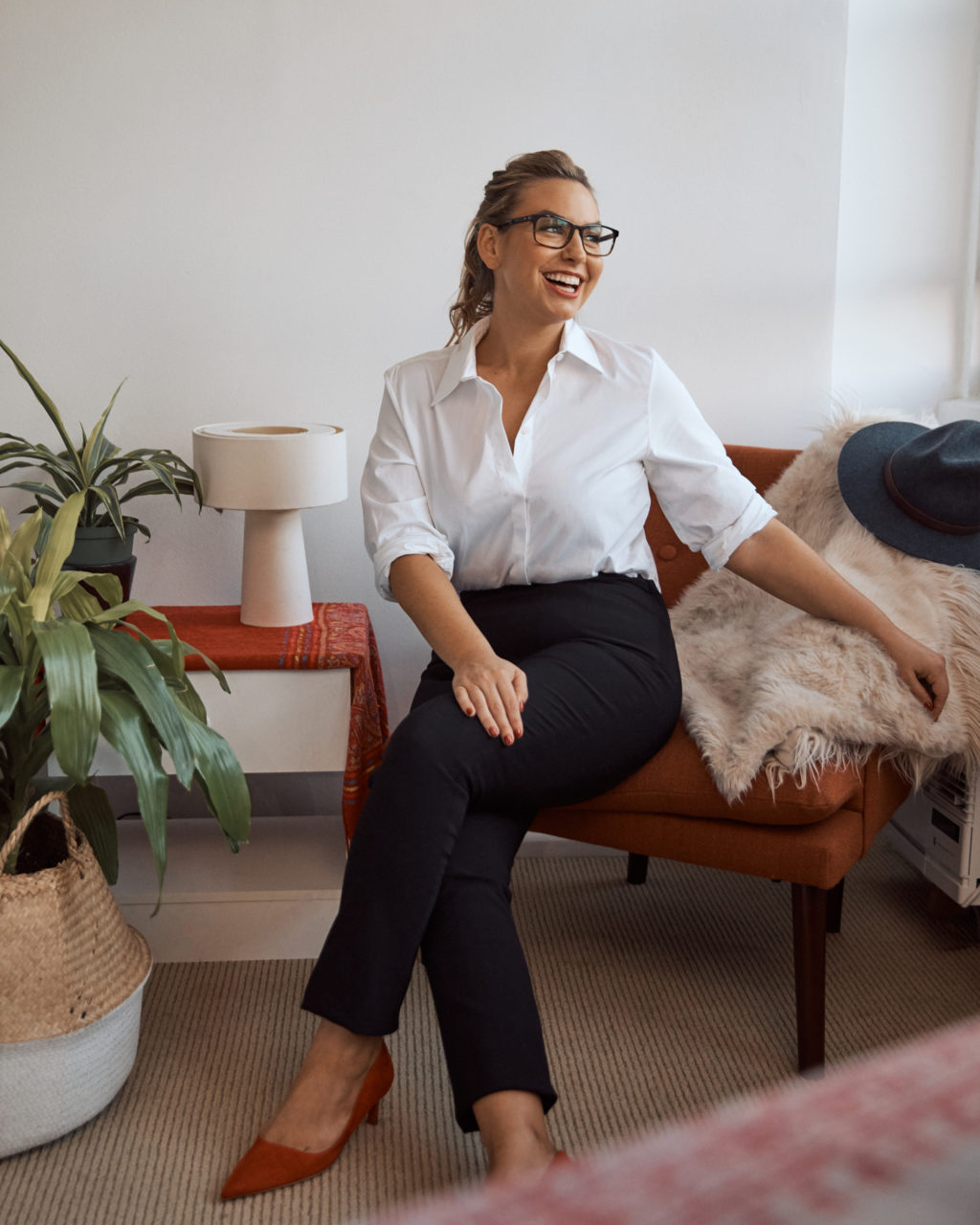
Cleo wears the Lauren top, the Foster pant, and the Lillian pump.
AFTER ASKING FOR A FRIEND, we got enough traction to start a television show, Sex.Right.Now. with Cleo Stiller. We did it for three seasons and were nominated for a Peabody Award in public service journalism in 2018. That was a huge honor, especially because when we first launched the show, a lot of people were like, “I heard sex in the title; this can’t be important. What are you doing?” But it was the second-best performing show on the network, so we knew it was important. And then, after #MeToo happened, no one questioned its importance anymore.
IN 2017, AFTER THE HARVEY WEINSTEIN STORY BROKE, I started getting messages from people, mostly straight men who watched my show, asking, “Are you going to do a season about #MeToo? Because I’m so confused, and I have so much to say, but I’m afraid to say anything because I don’t want to get in trouble.” These questions kept piling up in my inbox, and I just sat on them for almost two years. At the same time, I would get invited to speak or attend these events for women or non-binary people who were survivors of assault, and I’d hear these profound, important conversations. And inevitably, someone in those rooms would say, “Where are all the men? Where are our allies? Oh, they don’t care. They’re not here.” And I knew from getting all of these messages that men did and do care, and that they are thinking and talking about this stuff. It was a tough spot to be in, knowing that these conversations were happening on multiple sides, but that those sides were not coming together to talk and share information.
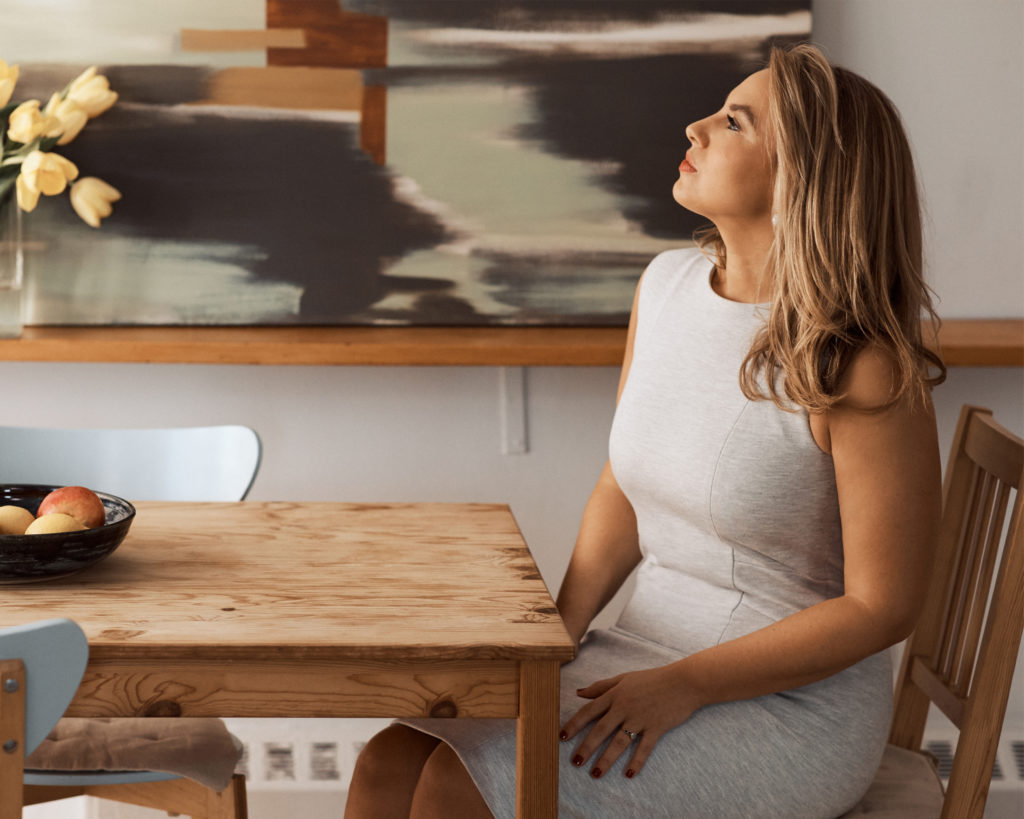
Cleo wears the Giovanna dress.
I FOUND THAT MOST OF THE QUESTIONS MEN WERE ASKING ME fell into similar camps or trends. One of them was, “What does a good man do? What does masculinity even mean?” And that touches every single aspect of our lives, from work to dating to friendships and how we think about money. It’s everywhere. I was also getting a lot of questions about how to be a good guy. Like, “I’m a good guy, so how do I handle X, Y, and Z situation?” Such as, “I’m a new father, and how do I bring up my son to be a good man when I don’t even know what that means anymore? I don’t want to raise the next Kavanaugh.” And I was like, “I don’t know!” Everything is in a gray area, and also, everything is changing so quickly, so there are no universal answers. And of course, there’s never a universal experience for men or women. You have to have such an intersectional understanding of how people move through this world. And it seemed important to explore that, but also incredibly complicated.
WHEN MY PUBLISHER APPROACHED ME about doing a book for them, I pitched them on three book concepts. Modern Manhood was the last one, because I was like, “Oh my God, this one would be so hard.” And of course they said, “We want that one.” And I was like, “Okay. I don’t know if I can do it, but I’ll try.”
BECAUSE I COME FROM A TELEVISION BACKGROUND, I gathered information for this book in a similar way that we’ve handled our shows in the past: I relied on my social channels and my network. I knew from the questions that had piled up in my inbox that we were going to hit specific topics. So put out calls on social media, asking, “Is this topic something you have thought about? Let me know.” Throw out the fish food, and wait for them to come. I also interviewed a lot of experts—therapists, counselors, etc.
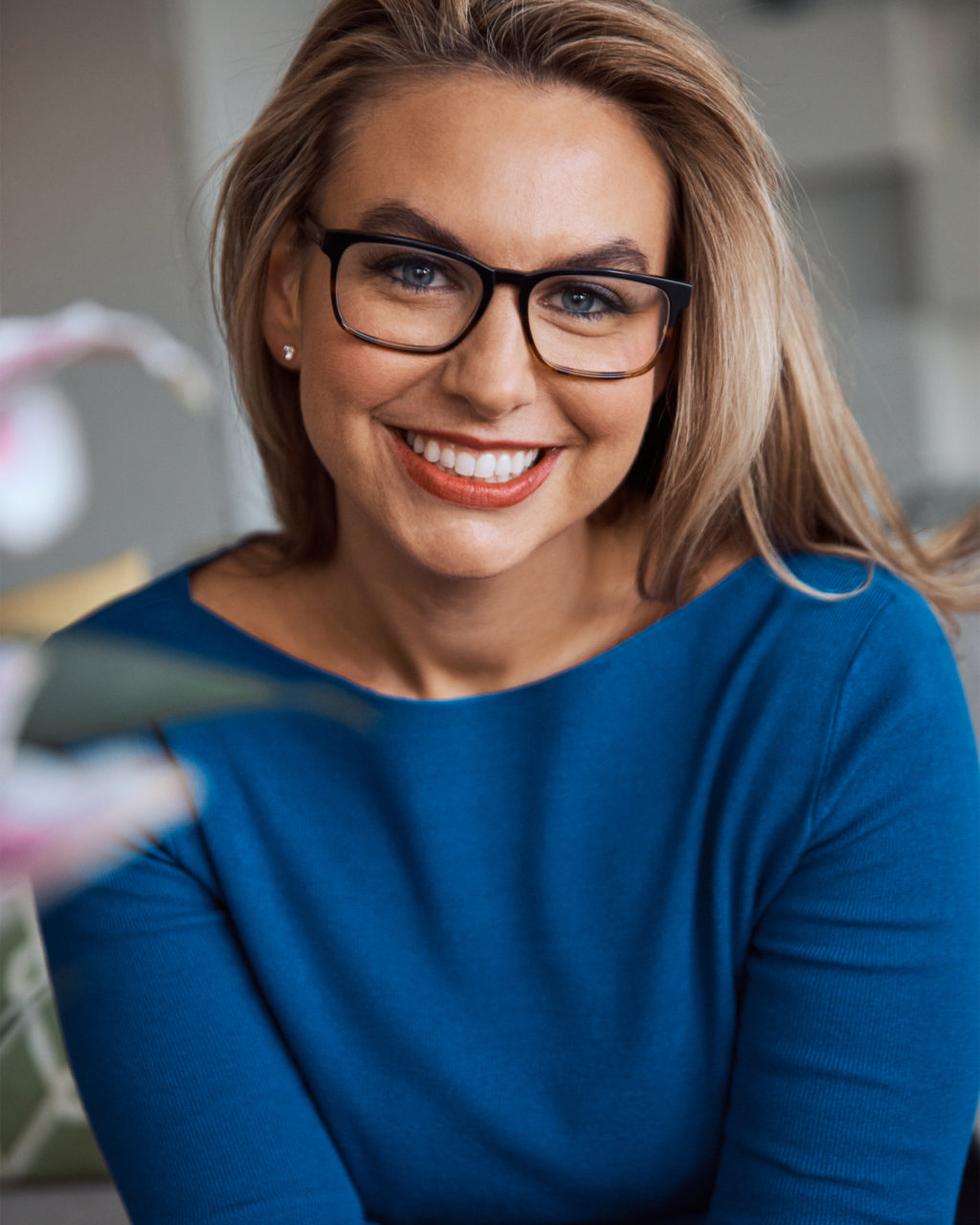
Cleo wears the Celeste top and the Bezel earrings.
FOR A PROJECT LIKE THIS, YOU HAVE TO HAVE EARNED TRUST and a reputation. Many, many people spoke to me for my book on the condition of anonymity. And that is understandable, given how honest they were about their experiences. That’s not something I could have done five years ago, because I had not yet built my professional reputation as a journalist in this area.
I HAD TO TREAT MY SOURCES WITH THE UTMOST EMPATHY, because a lot of them felt like they had a lot to lose in sharing their stories and their concerns. When it comes to this topic, people are wound very tight, understandably. It takes being a seasoned journalist to interview someone and, even if I don’t agree with them, be able to hold their story empathetically and weave it into this book in a way that portrays them fairly. That’s not an easy thing to do, but that was necessary.
WRITING THE BOOK WAS A PRETTY SOLITARY TIME. I woke up at 4:00am every morning, worked on the book until 9:00am, then worked with my other clients from 9:00am to 5:00pm, and then went to bed, I kid you not, at 7:00pm. It was pretty stringent. I do not recommend it. It was an extremely, extremely disciplined process.
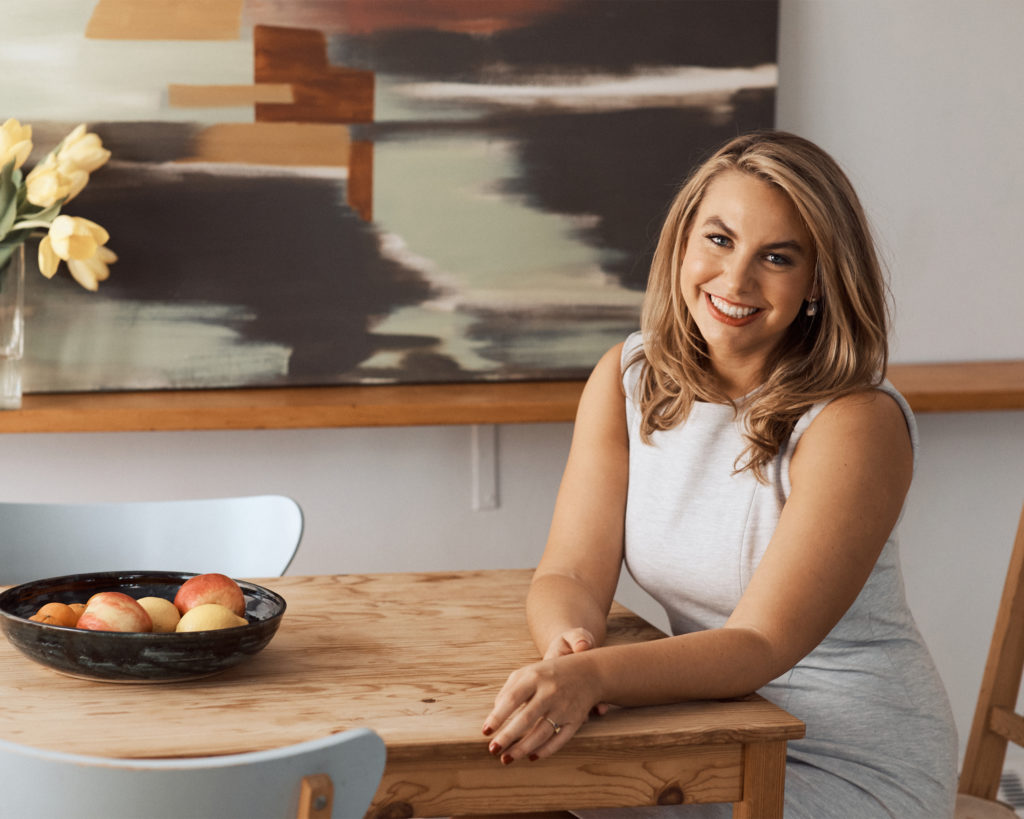
Cleo wears the Giovanna dress and the Capri earrings.
A LOT OF WOMEN ASK ME HOW THEY CAN HAVE BETTER CONVERSATIONS with men about the topics surrounding #MeToo. And I never want to be the person to tell women, “Listen more,” because I think women have done a lot of listening. And right now is a time for women to speak. But for women who feel like the men in their lives are not interested, I can tell you for certain that they are. One way to open up the conversation is to ask them where they are with it and what their thoughts are. What you learn in this book, and from scientific research as well as anecdotal stories, is that a good human is a good human. But unfortunately, most of us learn at an early age, “This is how you’re supposed to act, and if you don’t, then you’re out of the box and you’re weird.” Most men are encouraged not to have close emotional bonds with their friends, because that’s seen as weak or feminine. They’re taught, “You need to be on your own. Don’t talk about your feelings.” Now is a good time to empathize with that, and encourage men to behave differently.
AS A JOURNALIST, I HAVE TO LEAD WITH THE FOOT OF, “I belong here, and I know what I’m talking about.” People will often take any opportunity to question the expertise or intellectual rigor of a blonde woman, particularly one who has curves. And so whatever I wear when I’m working, I know I have to wear it confidently. It’s important to have clothes that fit well and are not fussy. When I’m working, I mean business. And my clothes need to do their job, because there’s no room for error.
Want to nominate a Woman of the Week? Email us at womanoftheweek@mmlafleur.com.
Photos by Patrick O'Leary
Styling by Nyjerah Cunningham, assisted by Ismelka Gomez

